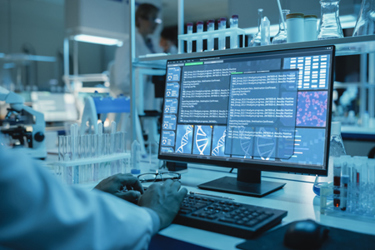Breaking Down Silos: How ERP Platforms Are Accelerating Drug Discovery And Early-Stage Development
By Md Akram Hossain

R&D is the lifeblood of the pharmaceutical industry, but paradoxically, it remains one of the most fragmented phases of the drug development life cycle. While pharma R&D is driven by cutting-edge science and multi-million-dollar investments, many teams still manage core workflows using disconnected tools for project management, budgeting, data analysis, and collaboration, which often leads to inefficiencies, delays, and costly errors, especially in early stages of discovery and preclinical development.
As pharmaceutical companies push to deliver faster breakthroughs without compromising quality or regulatory compliance, a new generation of enterprise resource planning (ERP) platforms is actively transforming how R&D is operated. Far from just financial or supply chain tools, modern ERP systems now extend into the lab and patient care settings, offering unified frameworks to manage projects, data, spending, and collaboration from early discoveries through IND submission.
R&D teams often operate in silos, with researchers using a stand-alone laboratory system and project managers relying on data-heavy spreadsheets or isolated dashboards, while procurement operates on separate approval chains for purchase order and fulfilment purposes and finance tracks budgets in ERP platforms that are disconnected from what’s happening in the actual lab setting. This fragmented setup results in gaps in communication, duplicated efforts, limited visibility into real-time progress, and delayed responses to issues that impact the R&D pipeline.
These inefficiencies are particularly acute in early-stage development, where companies must rapidly evaluate multiple batches of compounds to identify viable candidates for further testing. Disconnected data systems slow down these go/no-go decisions and make it harder to track costs against milestones, both of which can lead to missed opportunities or regulatory missteps.
ERP As An R&D Enabler
Modern ERP systems, particularly those built with pharma in mind, can be tailored specifically to support research workflows just as effectively as they manage commercial operations. When properly implemented, ERP platforms act as a connective tissue that brings together core elements of R&D: scientific data, project timelines, procurement needs, and financial oversight.
In many R&D labs, teams still rely on stand-alone systems for managing experimental protocols, sourcing reagents, and reporting results. But ERP platforms like SAP S/4HANA, Oracle Fusion Cloud, and Workday Enterprise Management now include modules that integrate with systems used in labs and scientific data repositories. This allows researchers, project managers, and procurement teams to work from a single validated source of truth, reducing manual reconciliation and enabling real-time decision-making.
A case study of PLIVA, a major European pharmaceutical company, highlights this potential. By reengineering core processes and implementing SAP ERP, PLIVA significantly reduced new product development cycle times, optimized resource allocation across research groups, and standardized budget tracking. The integration of project management, procurement, and documentation into one system created the transparency and flexibility needed to scale discovery efforts without compromising control.
In my career, I have been part of organizations where pharma R&D teams benefited significantly from integrations of modular cloud-based ERPs. The platform integrated budgeting and purchase order approval workflows for various clinical supplies with real-time notifications for users, enhancing overall operational efficiency and reducing order inaccuracy by 30 percent.
Streamlining Budgeting And Milestone Management
Early-stage R&D is not only data-heavy but also financially complex. Project funding often comes from a mix of internal capital, grants, or co-development partnerships, each with its own reporting requirements. Add to that the unpredictable nature of research timelines, and finance teams end up facing constant uncertainty.
ERP platforms today allow companies to set up standardized workflows for budget planning, milestone tracking, and real-time expense monitoring. When a new assay, synthesis project, or preclinical study needs approval, stakeholders can initiate the request through the ERP portal, get necessary approvals, and see the impact of spending against project goals — without relying on disconnected email threads or outdated spreadsheets.
This is especially valuable for managing IND-enabling studies, where compliance, cost, and timing are closely scrutinized. Automating the financial governance around these activities reduces administrative bottlenecks while ensuring regulatory readiness.
For example, at one pharma R&D team preparing for IND submission, implementing an ERP platform helped them automate deliverable approvals and budget alignment that led to being able to flag risks early and eventually helped keep the project timeline on track for submission for regulatory body approvals.
Enhancing Collaboration And Real-Time Transparency
Pharma R&D is increasingly decentralized, with discovery teams, CROs, and research partners spread across geographies. Without a shared infrastructure, cross-border collaboration often suffers from version control issues, data silos, and compliance gaps.
ERP systems that include collaborative portals, document management, and integrated project workspaces give teams a unified view of protocols, data sets, and project status. Researchers can share results instantly, upload updates in real time, and reduce duplication of effort across sites. This transparency also supports more confident, timely decision-making, especially when assessing early-stage candidates for advancement or termination.
In a high-stakes environment where one delay can push a promising compound out of alignment with a funding cycle or trial timeline, ERP-enabled visibility can make all the difference.
Future-Ready R&D: Power Of A Smart ERP
As the demands on pharma R&D continue to evolve with AI, machine learning, and high-throughput screening adding to the complexity, companies must rethink how they manage operational infrastructure in the earliest stages of innovation. ERP platforms that extend into R&D are not replacing scientific tools; they are enabling the people who use them to work more collaboratively, efficiently, and transparently.
Smart ERP platforms with AI capabilities and predictive analytics are emerging in modern and forward-looking R&D teams for streamlining workflows, enabling smarter decision-making and better managing risks. For companies focused on accelerating drug discovery and navigating early-stage development with greater agility, integrating ERP and AI into the R&D function offers a strategic advantage. It’s not just about unifying data — it’s also about unlocking the full potential of the teams working behind the scenes to bring tomorrow’s therapies to life.
About The Author:
 Md Akram Hossain is a product management and business analysis leader with over nine years of experience driving digital transformation across pharma and healthcare. He has deep expertise in ERP, EHR, and data governance platforms and has helped organizations integrate enterprise systems across research, clinical, and commercial operations to support faster innovation, compliance, and cost efficiency.
Md Akram Hossain is a product management and business analysis leader with over nine years of experience driving digital transformation across pharma and healthcare. He has deep expertise in ERP, EHR, and data governance platforms and has helped organizations integrate enterprise systems across research, clinical, and commercial operations to support faster innovation, compliance, and cost efficiency.
